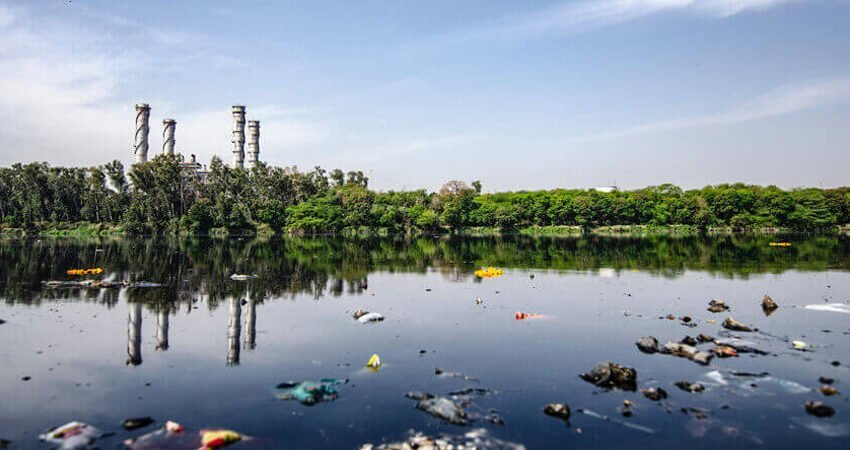Your Sustainable Fashion Glossary
Navigating the world of ethical and sustainable fashion can be confusing, especially with varying definitions and statistics. What’s the difference between fair trade and Fairtrade? What does greenwashing mean, and is it the same as greenhushing? What is carbon offsetting all about?
To help you out, we’ve compiled this glossary of 30 essential ethical and sustainable fashion terms.
Table of Contents
- Biodegradable
- Biodiversity
- Carbon Footprint
- Carbon Neutral
- Carbon Offsetting
- Circular Fashion
- Cruelty-Free
- Cultural Sustainability
- Diversity/Inclusivity
- Ethical Fashion
- Fair Trade/Fairtrade
- Fast Fashion
- Greenhouse Gas Emissions
- Greenhushing
- Greenwashing
- Living Wage
- Microplastics/Microfibres
- Organic
- Rana Plaza
- Recycling
- Science-Based Targets
- Second Hand
- Slow Fashion
- Supply Chain
- Sustainable Fashion
- Traceability
- Transparency
- Ultra Fast Fashion
- Upcycling
- Vegan
Biodegradable
Materials that naturally decompose quickly in the environment, avoiding pollution. Brands may use biodegradable packaging, one of the most eco-friendly options.
Biodiversity
The variety of life on Earth. Fashion practices can cause biodiversity loss through destructive raw material sourcing, leading to soil degradation and habitat loss.
Carbon Footprint
The total amount of greenhouse gases generated by our actions. Initially coined by BP, it’s now used to quantify the impact of organizations or products.
Carbon Neutral
Balancing emitted carbon dioxide with the amount removed from the atmosphere. Often achieved through carbon offsetting, though the term “net zero” is becoming more common.
Carbon Offsetting
Investing in environmental projects to balance out greenhouse gas emissions. Common methods include tree planting and carbon-neutral shipping.
Circular Fashion
Designing out waste and pollution, ensuring clothes help regenerate natural systems. Based on Cradle to Cradle design philosophy, it promotes long-lasting, recyclable products.
Cruelty-Free
Products manufactured without harming animals. Note that cruelty-free doesn’t always mean vegan.
Cultural Sustainability
Stewardship of cultural heritage by communities. Ensures benefits and prevents exploitation in the use of cultural heritage, especially in craft and artisanship.
Diversity/Inclusivity
Representation of diverse peoples in supply chains, leadership, and marketing. Companies with diverse leadership have better environmental compliance and stronger financial returns.
Ethical Fashion
Focuses on the social impact of the industry, including fair wages and working conditions, beyond local labor laws.
Fair Trade/Fairtrade
Fair trade refers to the movement supporting producers and protecting workers’ rights. Fairtrade specifically refers to the certification by Fairtrade International.
Fast Fashion
Mass production of cheap, trendy clothing at high speed. Often poor quality, leading to quick disposal and significant environmental and labor rights issues.
Greenhouse Gas Emissions
Gases that trap heat in the Earth’s atmosphere, causing global warming. Key examples include carbon dioxide, nitrous oxide, and methane.
Greenhushing
When companies avoid disclosing sustainability information to prevent criticism or accusations of greenwashing.
Greenwashing
Using marketing to falsely portray products or policies as environmentally friendly. Common practices include creating “eco-friendly” collections while ignoring critical issues elsewhere.
Living Wage
The minimum wage required for workers to live a decent life, differing from the often lower legal minimum wage.
Microplastics/Microfibres
Tiny fibre fragments shed from textiles during washing and wearing. Synthetic microfibres, or microplastics, significantly pollute the environment.
Organic
Materials grown without chemical pesticides and insecticides. Popular in the fashion industry, with certifications like GOTS and BCI ensuring organic standards.
Rana Plaza
The 2013 collapse of a clothing factory in Bangladesh, killing over 1,000 workers. It highlighted poor practices in fast fashion and increased demand for transparency.
Recycling
Converting waste into new products. In fashion, recycling plastic into yarn for textiles is common, though it remains contentious.
Science-Based Targets
Targets aligned with climate science to meet the Paris Agreement goals. Helps businesses reduce greenhouse gas emissions and grow sustainably.
Second Hand
Refers to pre-owned clothes, reducing environmental impact by avoiding new purchases and extending the life of items.
Slow Fashion
Focuses on sustainability in clothing production, promoting better quality garments, fair treatment, and longevity.
Supply Chain
The sequence of processes involved in manufacturing fashion products. Highly fragmented, making traceability challenging but essential.
Sustainable Fashion
Builds on sustainable development, managing environmental impacts and ensuring well-being throughout the supply chain. Requires a shift from overproduction and waste.
Traceability
The ability to trace a product’s supply chain from raw material to finished product. Essential for transparency and sustainability efforts.
Transparency
Openly sharing information about production processes, from start to finish. Crucial for sustainability and ethical practices.
Ultra Fast Fashion
An accelerated version of fast fashion, with even faster production cycles and higher environmental and labor impacts.
Upcycling
Turning waste into new, often better-quality items. Encourages creativity and reduces environmental impact.
Vegan
Products made without animal products or by-products. In fashion, this includes avoiding materials like leather, wool, and silk.
This glossary provides a foundation for understanding the key terms in ethical and sustainable fashion. By familiarizing yourself with these concepts, you can make more informed choices and contribute to a more sustainable future.




